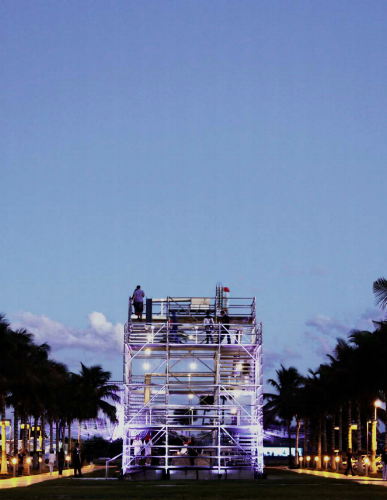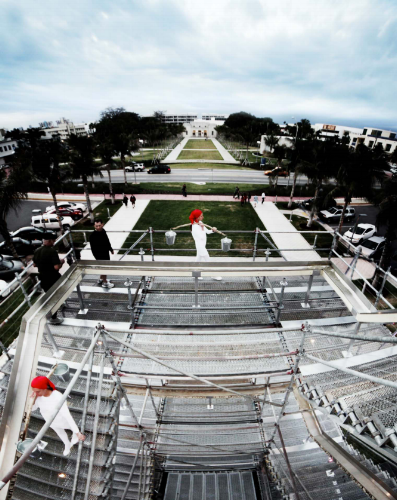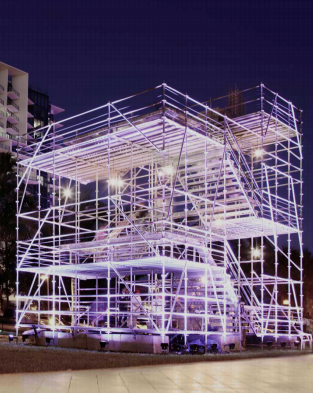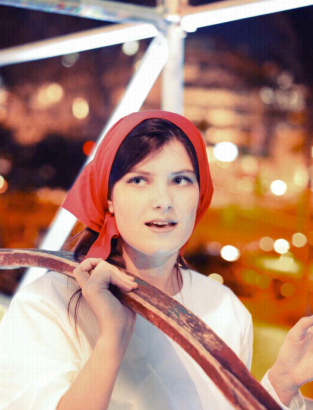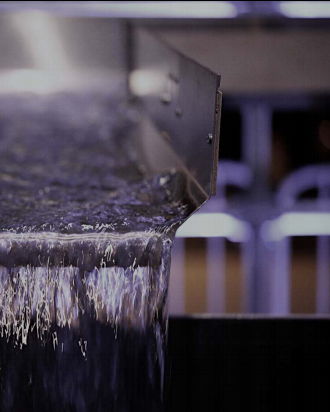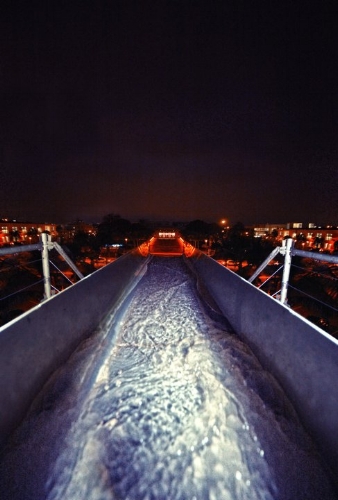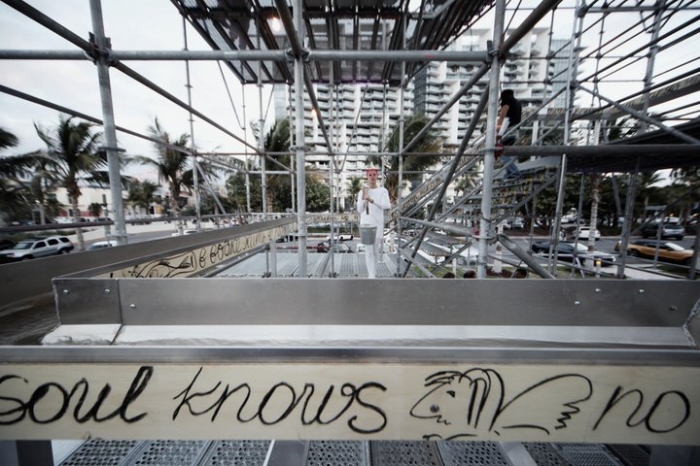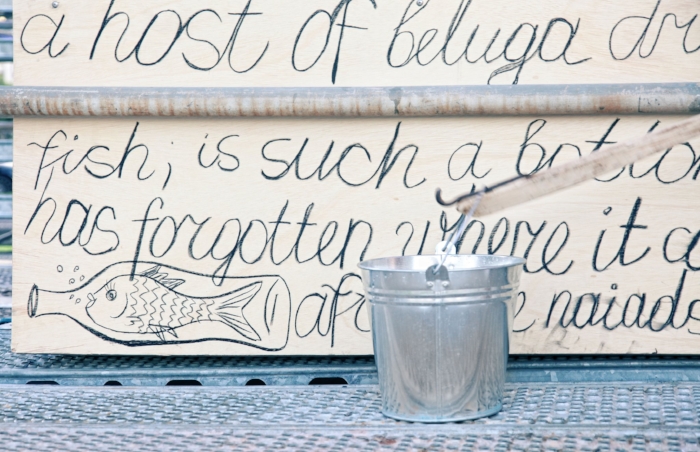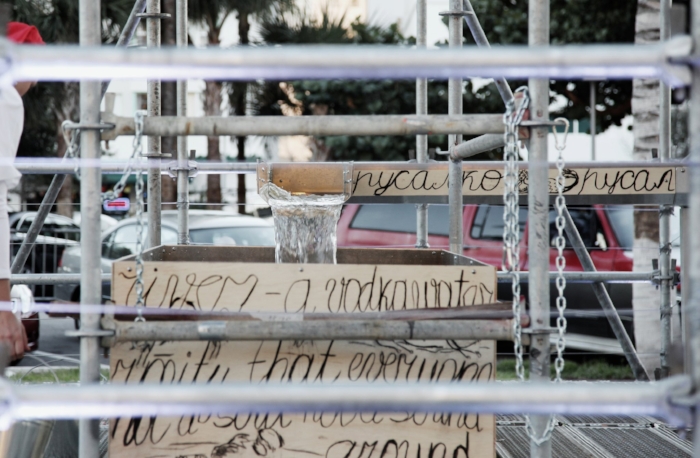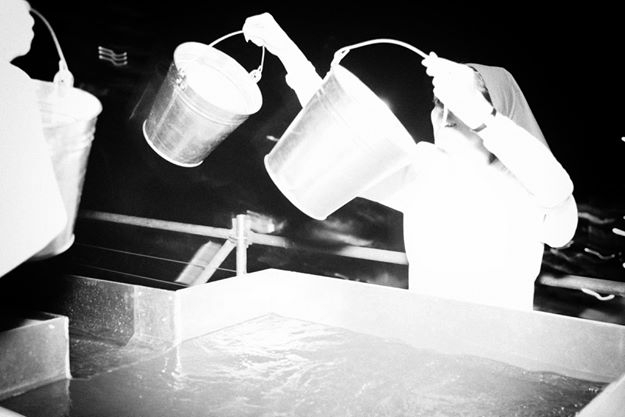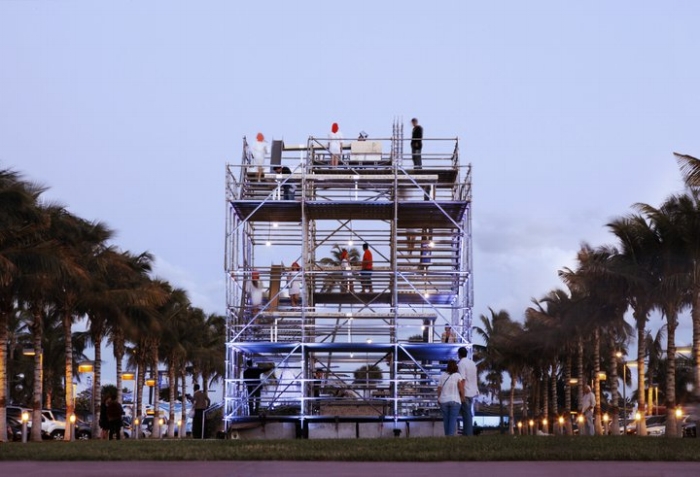Site specific installation and performance as a part of Art Public at Art Basel Miami Beach
Commissioned by Beluga Noble Russian Vodka
Presented by Luciana Brito Galeria, Sao Paulo
Curated by Katya Krylova
Architectural supervision by Atelier Marko Brajovic, Sao Paulo
Performed by Istoki, female Russian choir, Podolsk
Photo and video documentation by Ilya Pusenkoff, Cologne
Hours performed: 60
December 1-5, 2010
Vodka is forever. Russia is the country probably most involved in the ideology of vodka, and as the motherland of the original vodka myth, Russia should become the source of a new, even fake mythology that would always receive a warm welcome from a public thirsty for new interpretations. To cater to these expectations the artist built a structure that accommodated an entire river.
The great vodka river installation was housed in a metallic scaffold-like structure that drawn on the constructivist ideas of the 1920s ( Konstantin Melnikov, Moisei Ginzburg) and later twentieth-century responses to constructivism such as the Centre Pompidou, designed by Renzo Piano and Richard Rogers. The artist conceived a multi-storied site in which the river was channeled down an aluminum gutter. The vodka was rushed downwards, following the winding of the stairs, its straight and narrow course occasionally interrupted by waterfalls, and wider and narrower areas.
The artist invented a fictitious mythological storyline involving the weeds, bacteria, fish, animals, and nymphs that inhabit the great vodka river. He compiled an entire "Great vodka river encyclopedia", whose text was handwritten by the artist (in pencil and employing a naive handwriting style) in english and russian on each of the two sidewalls of the gutter.
The installation also featured human performers: the beautifully dressed nymphs of the great vodka river - strong, tall, ruddy-cheeked, russian-looking women, each bearing a shoulder yoke and buckets (just like russian village women on their way to fetch water from a well). They presided over a nonstop mechanical ritual that involved descending the stairs with empty aluminum buckets and ascending them again with buckets filled. the culmination of each ritual circle took place at the head of the river, on the top floor of the installation. There, the vodka temple attendants met and crossed their buckets in order to transmit the liquid's energy to each other.
All visitors were welcomed to walk upstairs and then downstairs to see the river and experience it in their own way.
